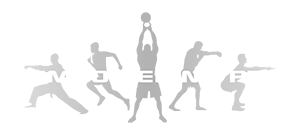Press Up Mistakes
Press ups, the age old classic exercise that sends shivers of nostalgic horror down most peoples back. Even the mere name reminds you of those PE lessons in the gym way back when, doesn’t it?
We struggled back then with our noodle arms and deflated chests, but do you still struggle now?
Apart from maybe those with double D pectorals, most of us do.
I am here to provide you with your Physical Education for today, and teach you exactly how you should be pressing your body off of the ground. Unless you are Chuck Norris, then it would be pressing the earth down.
How to Perform a Press Up:
You want to start off in a High Plank. Your feet should either be together or shoulder width apart which will make it a little easier on your core. Your weight needs to be over your hands in order to offer your muscles resistance when you push. As you bend your elbows, they should move back at a 45 degree angle from your side. You want to hover just off of the floor to maintain tension.
In this position you will notice that if you make an L shape with your finger and thumb, your thumbs should be parallel with each other, and be in line or just underneath the nipple line.
From here, twist your palms into the ground outwards and press, without changing the position of your elbows. You are now back in a High Plank and ready to repeat.
How Not to:
Elbows Position:
The elbow position is probably the most frequent mistake I see, so we will start with that.
As people do their press ups, they quite often allow their elbows to go straight out to the side. Obviously your elbows will be on your side, but I mean to the extent that they are parallel with your shoulders. Typically, this is combined with hands that are too far in front of them, placing even more pressure on the shoulder.
If you know anything about the shoulder joint, you will know that it is a ball and socket joint. This gives it a wide range of movement. However, it does not mean it is limitless. The socket has to curve around the ball in order to hold it in place. When you have your elbows that wide, you begin to allow the upper arm to press into the back of the socket. Not only that, but if you were to continue to lower yourself and place even more stress on the joint it will grind and eventually pull the ball out. This is not even including the fact that you are far more likely to engage your shoulders in this position then you are your chest. Doing a press up with this form make this Chest exercise entirely redundant.
Give this a go:
Sit or stand, and go into the bad position, with your elbows in line with your shoulders. Now pull your elbows as far back as you can.
Next, lower your elbows so that your entire forearm is in line with your chest. Remember what I mentioned before, thumbs roughly in line with the nipples. Again, pull your elbows back as far as they will go.
Which one was more comfortable?
Which one allowed you to bring your elbows back the furthest?
Which provided a lengthening or stretch on your chest?
Anatomically speaking, it should be the later, as I am sure you would have guessed. If not, it may be that you are so used to it that your body is trying to adapt to it. This is not a good thing, so do not mistake it as an excuse to continue.
For most people though, this should be evidence enough. You can lengthen the muscle to get a better contraction and wider range of movement. You will also find that you can probably last longer, or lift heavier than you thought due to the enhanced muscle activation.
Hand Placement:
As previously mentioned this is a common problem with those who make the first mistake, especially if they need to go down to their knees.
It is important to keep your hands underneath your body as you press. If you do you will cause excess strain on the shoulder joint by flaring the elbows out. Failing that, you will barely work your chest at all as you shift the weight to your lower back and shoulders.
You also do not want to keep your hands too close to you. If your elbows are pinned against your ribs, you will cause a greater Tricep engagement, meaning less emphasis on the chest.
Bent Back:
When performing this exercise, your back should be in a neutral position. This means that you should not be dropping your hips to hump the floor as you press, or sticking your bum into the air like you are doing the downward dog stretch.
Keep your core engaged, and your eyes down, and you should feel that you can hold this position better. Aim to keep your head, shoulders, hips, and heels in one straight line.
Remember, if your core is giving out before your chest, use a wider stance to provide a better support for your body weight.
Hopefully this has been enlightening, or at least a reminder as to how to correctly perform your press ups. The key thing to remember is that once your form does inevitably falter, either rest, or make it easier by going down to your knees. Those gains aren’t worth dislocating your shoulder.
(I exaggerate, but it is indeed possible with some of the positions I have seen (think of the Exorcist haha).
Watch my video on Pressups here – or see the full libary of EmpoweringPT videos on Youtube.
Become Empowered Today! Call 0750 333 6773 or email James Edwards.

